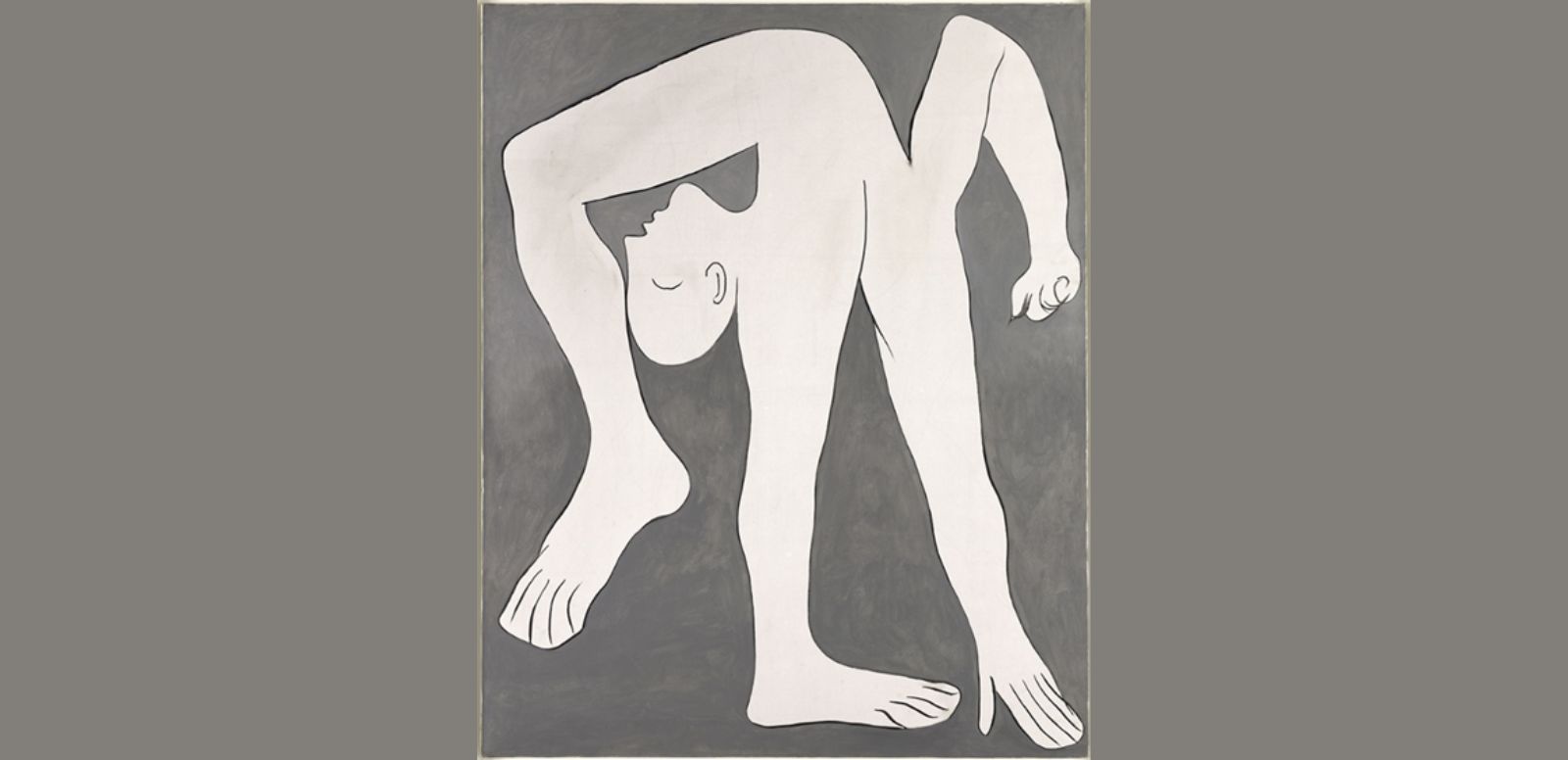
Musée national Picasso-Paris
© Sucesión Picasso, VEGAP, Madrid, 2023
Picasso's interest in acrobats was heightened during a visit to the Cirque Médrano in Paris in the 1920s, which inspired him to create a series of paintings centered on this type of performer. However, to fully understand the importance of The Acrobat (1930), it is necessary to mention his pink period (1904-1907). During this period, Picasso explored themes related to bohemian life, circus performers and society's marginal characters. Some of the pieces he produced during this period include The Acrobat with a Ball (1905), Two Acrobats with a Dog (1905) and Family of Saltimbanquis (1905). The color palette contemplates softer, warmer tones, such as pinks and pastels, hence the name given to this period.
Later, at the end of the 1920s, Picasso again turned his attention to the circus and acrobats, after accompanying his son Paulo to the Cirque Médrano. This renewed interest led to a series of paintings between 1929 and 1930, including The Acrobat (1930).
The character presents a body of disfigured anatomy that evokes the essence of his profession. The acrobat occupies a space cut to his size where he contorts himself showing his body control evoking, with the narrow composition, the flat figures of the old card games.
The work reflects Picasso's fascination with the malleability of the human form and its power of metamorphosis. Through this painting the artist captures the "surreality" of the figure, that profound resemblance beyond the forms and colors in which things are presented.
Sources:
Musée national-Picasso París: https://www.museepicassoparis.fr/fr/lacrobate

